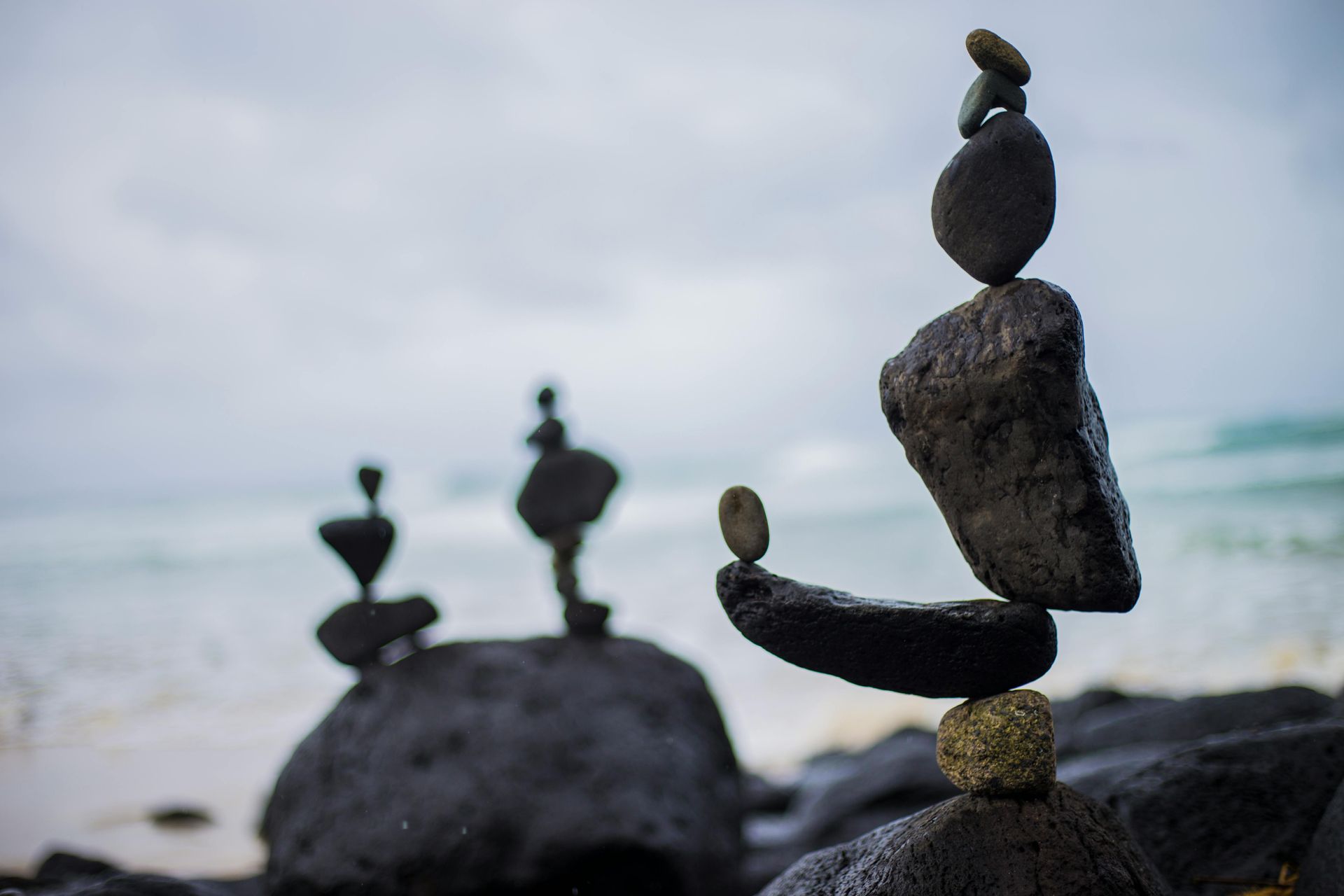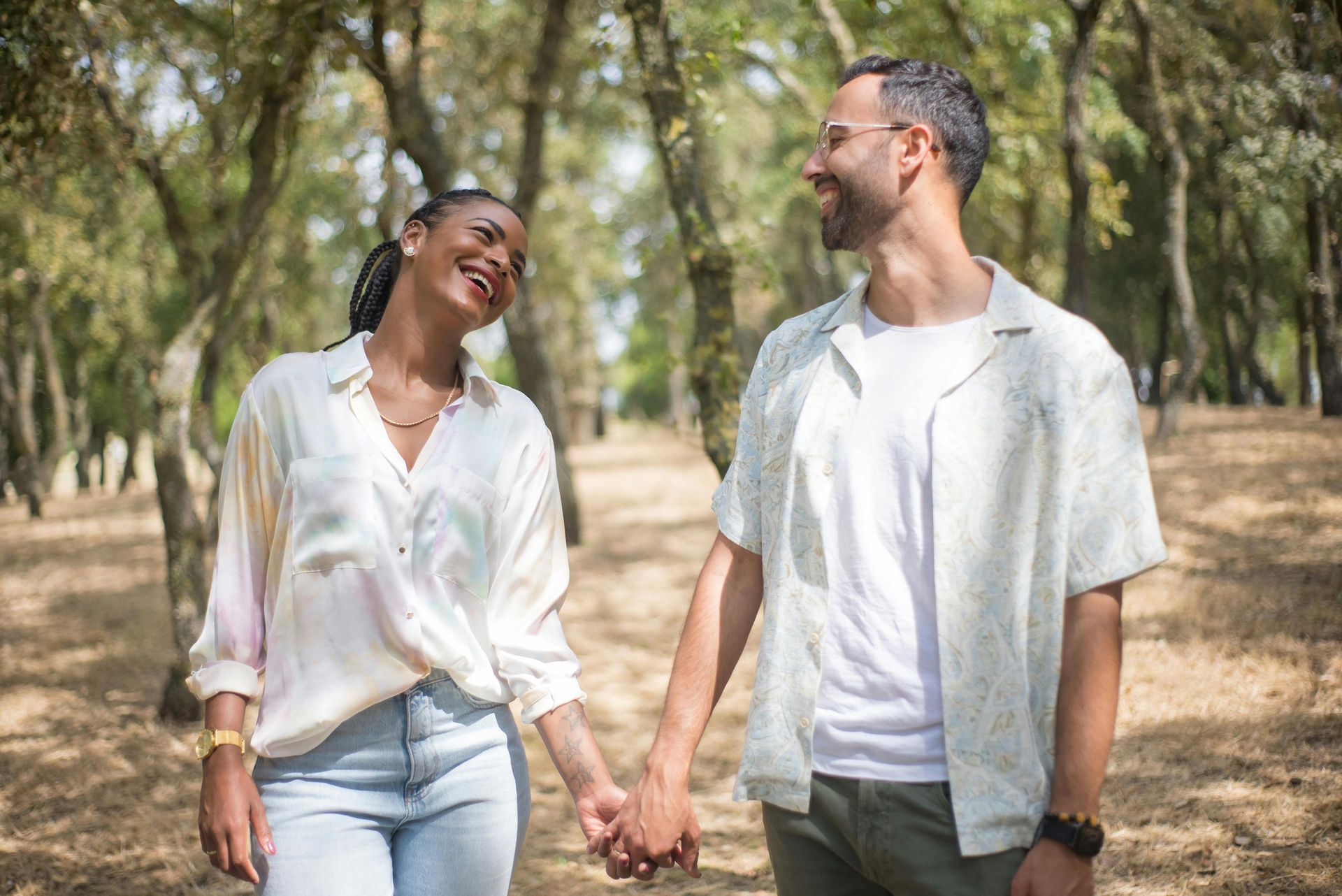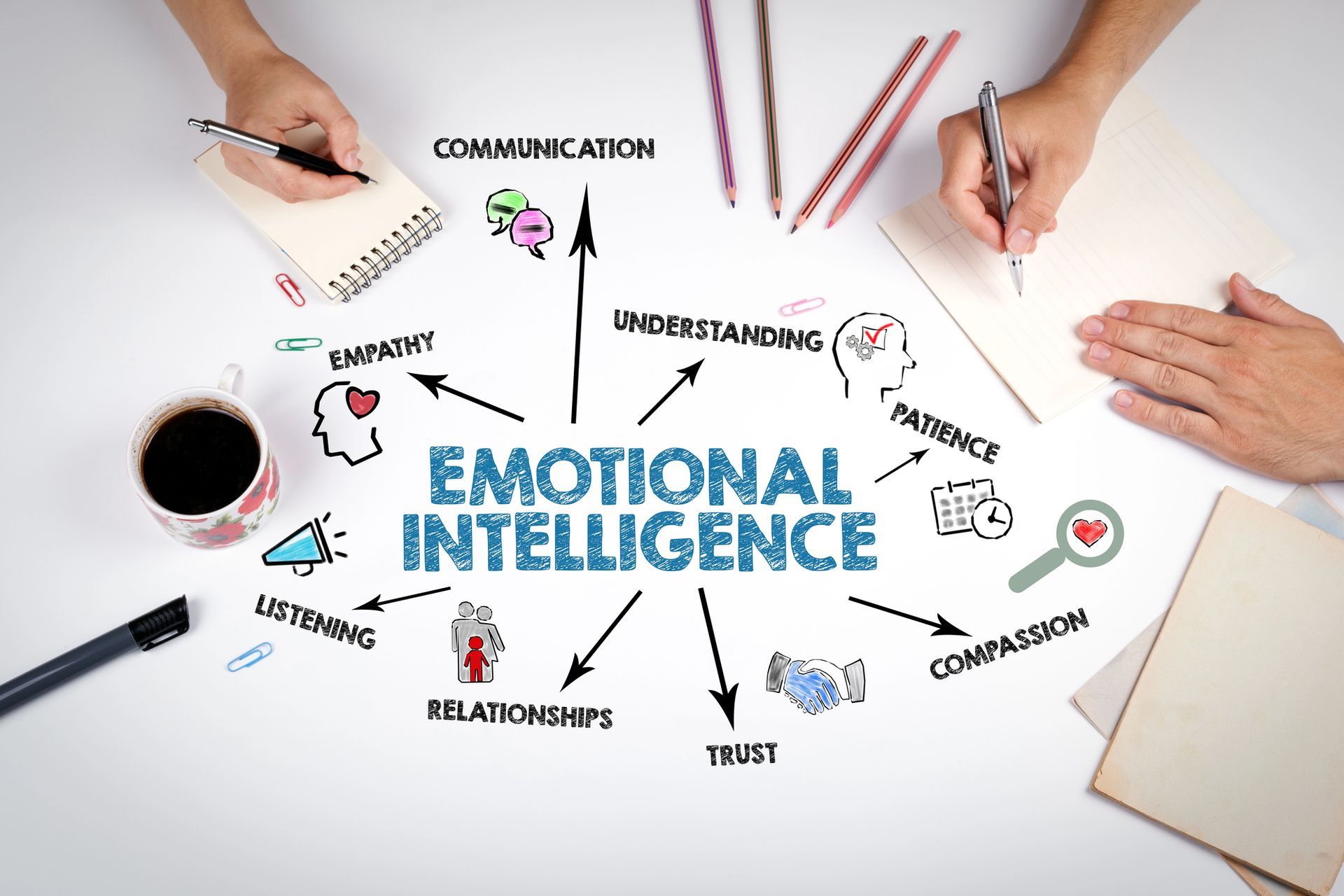The “We” Model of Relationships: How to Promote Differentiation While Feeling Safe and Secure

For many of us, we fall into the symbiotic model of relationships, which is “you and I are one and I am the one!”
We become fused with each other emotionally and physically, joined at the hip without knowing or finding ourselves in a relationship. In a balanced mature relationship, we are able to communicate our needs and desires without the threat of disconnection.
Mary and John have been together for two years. They met online and had a warm beginning. They decided to pursue a relationship and went through the various stages that all couples go through.
Initially, John would say to Mary, what would you like for dinner? Her response, “I am easy…whatever you would like.”
He enjoyed this. Getting to have whatever he wanted was a treat. In his previous relationship, he often ate what his ex-wife had made, succumbing to her latest food trend while being on a diet.
He thought “Mary is so easygoing. I am thrilled to have someone like her.”
Similarly with their outings, she was easy to get along with, accompanying John on his adventures with a smile on her face. He continued to call the shots—what time they went to bed, where they went for dinner, the movies they watched.
Even their sexual habits were initiated by John. Mary followed without complaining. If John was happy, she was happy. This was her motto!
With the evolution of their relationship, they talked about moving in together. Since John already had a place and Mary was living in a small apartment, he proclaimed, “Why don’t you move into my place?”
Mary, without thinking and really knowing herself in the relationship and what she might need, agreed. Her motto, if John is happy, I am happy. She moved into John’s already established place.
With the deepening of their commitment, the unconscious part of the brain now sees one another as family. Their “love drugs” begin to wear off, the anaesthesia that has kept them in this trance and temporary in-love state.
While the chemicals are present, both feel pleasure and give pleasure. Putting their best foot forward and not seeing the negative tendencies has set them up to see an illusion of who each other is. This stage is known as the honeymoon phase.
Losing Yourself in a Relationship
It’s important to think about what is going on, and what’s not being seen.
This part of Mary’s personality and unconscious pattern of collapsing and accommodating has been with her since childhood. With a dominating father who constantly said: “Do it my way, or the highway,” she learned to protect herself and go along with things.
This trait served her well while growing up and helped her to attract a mate like John. She is at “home” with John and unaware of what lies beneath the accommodating part of her. It’s a deep seated fear of being left or being alone. With little self-reflection, she ultimately believes that this is who she is and how she must be in the world to receive love and affection.
John on the other hand, was a child who suffered neglect growing up in his home. His parents were preoccupied with themselves and their work. He often was unnoticed. He learned to protect himself from their dismissal by doing things for himself, having things his way most of the time.
Underneath his protective layer of control is anxiety. He does not share his vulnerability very easily and feels much discomfort in doing so. He prefers to keep his cards close to his chest and likes things to be simple and easy.
If he is confronted or experiences too much discomfort around conflict, he will retreat within himself. When by himself, he feels soothed, especially when he gets to do things his own way. As a child he would spend much of his time in his room, exploring his interests and reading his books.
The first days and weeks of their new living arrangement is thrilling and exciting for both of them. They don’t have many issues, as the symbiotic pattern of Mary accommodating and John making all the decisions is familiar and comfortable. In this pattern, both are quite agreeable, feeling content and enjoying each other’s company. No longer feeling isolated and alone in their pain, they begin to relax their defenses and guardedness. With the commitment of being together, their guards and protective mechanisms relax further.
Mary quietly decides one day that she would like to purchase new furniture, sprucing their place up. She takes it upon herself to go shopping, telling herself that John will love whatever she chooses. She has been putting up with his furniture that was left over from his marriage.
Initially, she comes home with a few small items. John notices, but does not say anything. He says to himself, “Mary should feel comfortable, this is her home too.” He concedes to her additions, however, inside he feels slightly rattled that she didn’t talk to him about the purchases. He remains quiet.
While he is at work, a new living room set is delivered. Enthusiastically, Mary requests the delivery men to move the old furniture set to the basement, hoping to surprise John with their new and improved living room. Eager to see his face, she prepares herself and the furniture display.
Expecting to be met by Mary with her usual open arms, he walks in the door and is shocked and mortified at what he finds. His first thought, “What the hell happened here? Where is my furniture? I didn’t order this! His second thought, who is this person standing here in front of me? I don’t recognize her.”
Mary immediately registers his anger and disappointment and tries to cajole him, “Don’t you like it? What’s wrong?” She begins to explain and he stonewalls her, turning away from her for the rest of the evening.
This Is Their First Fight!
Both are feeling disillusioned and upset. Mary is hurt and disappointed. She becomes despondent and extremely doubtful and fearful at the same time. “What have I done? I thought we were in love. Why is he acting like this?”
Then a familiar feeling arises. She begins to recognize this feeling while growing up in her family of origin. To her shock, she has recreated her family situation all over again. The feelings are intense for her. She makes attempts to talk to John and reconnect. He refuses and shuts down. Living inside his head, he is replaying his hurt feelings of feeling not seen, and neglected by his parents.
“How could Mary do this?” I thought she was the one…..a nice girl who went along with me.” He had been feeling confident and now that has gone out the window. His loneliness and apprehension from childhood continues to resurface. In these moments, he considers ending the relationship now that they aren’t getting along.
What Will They Do?
Many relationships go through this first disillusionment. It’s an opportunity to wake up from the symbiotic dream that “we want the same things. That we are the same and we should never disagree or have a fight.”
Fifty percent of marriages end in divorce because folks don’t know how to recover from these kinds of disagreements and make healthy repairs. Most have not learned the skills to navigate the differences or acknowledge that they have adaptations that were developed in their family of origin.
Most individuals don’t have a conscious awareness of the impact from the first 6 years of their life. The imprints and memories are laid down and can be reactivated or triggered in the adult love relationship.
When we are young, we depend on our parents and caregivers for love and connection. When the love and connection needs are not met, we end up looking for it in our adult relationships, hoping to move away from the loneliness and desperation and disconnection we felt as children.
The wounds were never healed and the sutures begin to unravel in the adult love relationship. This can be a challenging time for couples.
When triggered into our vulnerabilities, the coping mechanisms kick up to protect them. Our options become limited. In fact, few choices are available when the default mode of protection and self-preservation is activated.
Can They Recover?
Mary learned to accommodate and go along in her relationships, avoiding stating her views, desires, and needs to cover up her fear of disconnection and pain.
John learned to close off to others, having superficial relationships, and moving away from his pain and disconnection of being neglected.
Both show up in relationships, masking their wounds and injuries. When the fight erupts, this is a signal that something old and painful is resurfacing.
If this couple is able to move into differentiation, the WE model of relationships, they would be pushed onto the path of growth and maturation. Here is their opportunity to grow beyond their adaptive and protective patterns.
If Mary could learn to open up herself about her desires and needs and say:
“John…I am really sorry. I wasn’t thinking about how I have been showing up in the relationship. For most of my life, I have gone along with what others wanted and their viewpoints, and have been very scared to rock the boat. This is scary for me. I become passive in verbalizing my wishes and desires, and my actions become aggressive, hurtful and unilateral. I need to learn to speak and tell you what is on my heart and listen to you and work together as a team.”
If John were to come from a mature and differentiated place, he would respond with:
“Thank you Mary for your acknowledgement. No one ever came to me to talk about things—they left me alone to figure things out and not consider my feelings. I feel grateful when you acknowledge my pain. I do hear and see that you have been very easy going. And I thought that is what I wanted. However, I would never have to grow into a full human being if I always had it my way. And that is not a real relationship. A real relationship is one where we talk about things and share our inner world. I was selfish and self-centred and didn’t really push for what you wanted. I took the easy way out and I am sorry. Can we please try again? I would like to go and have another look at the furniture. I think you probably have great taste and I believe we can work this out.”
Both reflect on what the other says and feel relief.
Isn’t this what we all want?
Many of us know we were loved by our parents, however, didn’t feel seen or cared for emotionally by them. Being seen by a partner and having our feelings, desires, and needs witnessed allows us to come into fullness of who we really are.
The adult relationship is a place to mature these parts of ourselves into our full potential, moving from the ME to WE.
May you enjoy this article and apply some of it to your own life. You may also wish to learn more about restoring your connection in a counselling session or in an upcoming
weekend retreat.
Register for our Newsletter and receive a Free Love Chat Package
- The 5 Steps to a Better Relationship
- Ongoing Monthly Relationship Tips
- If you want more love in your life, our relationship Love Chat Package is an easy cost-free first step.


















